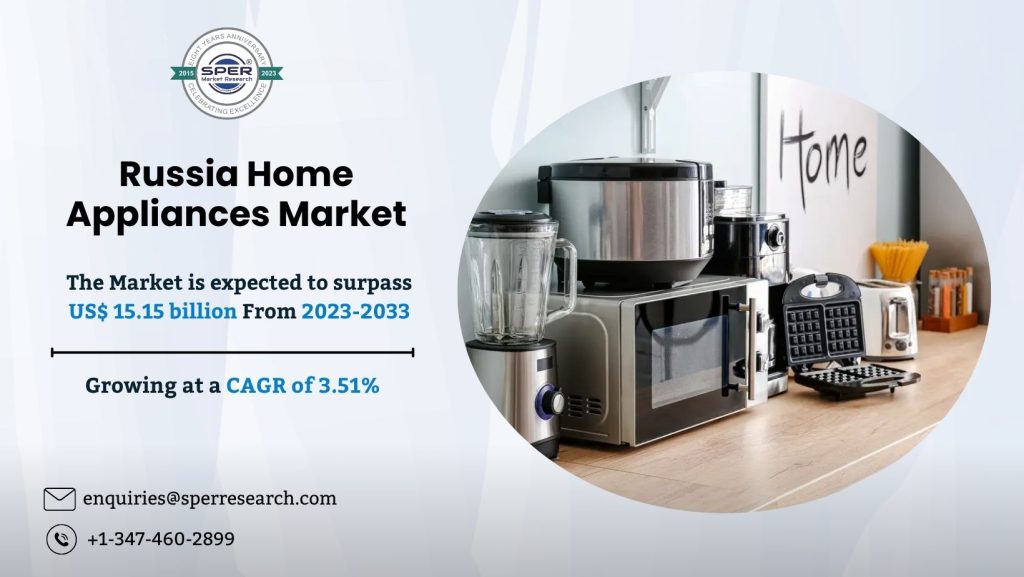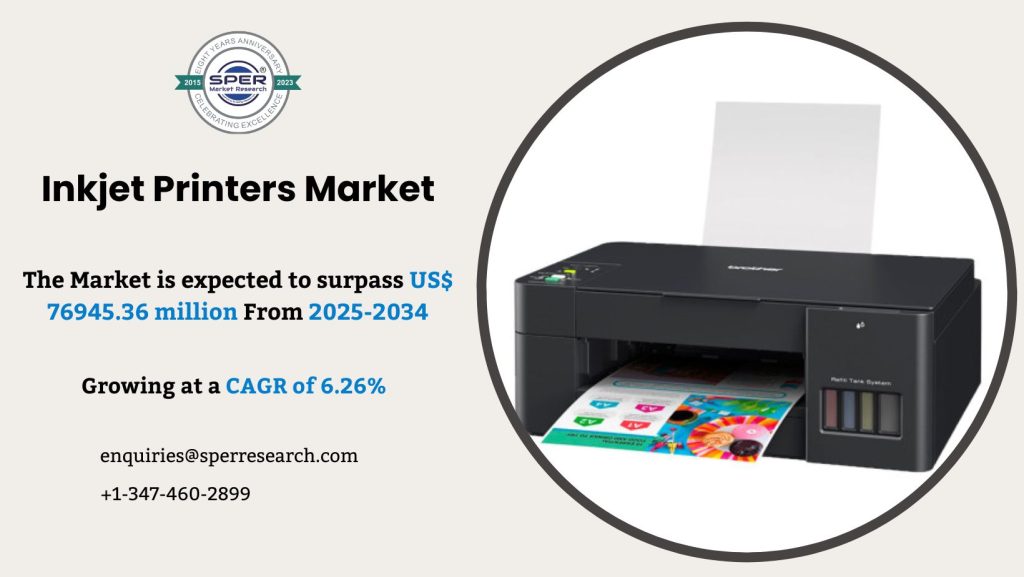Appliances are mechanical or electrical devices used in homes to help with tasks like cleaning, cooking, preserving food, and providing comfort. Microwaves, air conditioners, vacuum cleaners, ovens, refrigerators, and washing machines are typical examples. These devices raise living standards by improving convenience, saving time, and increasing productivity in daily chores. Usually, they are divided into two categories: large appliances, such as dryers and dishwashers, and small appliances, such as blenders and toasters. Modern home appliances are becoming more energy-efficient, smart-enabled, and user-friendly due to technological breakthroughs. This reflects changing customer expectations for automation, sustainability, and improved functionality in home settings.
According to SPER market research, ‘Russia Home Appliances Market Size– By Major Appliances, By Minor Appliances, By Distribution Channel- Regional Outlook, Competitive Strategies and Segment Forecast to 2033’ state that the Russia Home Appliances Market is estimated to reach USD 15.15 billion by 2033 with CAGR of 3.51%.
Drivers:
The market for smart and energy-efficient appliances is being driven by the modernization of lifestyles, increasing urbanization, and rising disposable incomes in Russia. Upgrades to outdated appliances are further encouraged by government policies and subsidies that support energy-efficient manufacture. IoT-enabled features and other technological innovations improve user ease and appeal especially to younger, tech-savvy urban dwellers. Customers can now browse a large selection of appliances at low costs thanks to the growth of e-commerce platforms, which has also greatly enhanced market access. All of these elements work together to sustain growth in the Russian home appliance market in both urban and semi-urban areas.
For More Analysis and Insights, Visit
Restraints:
The market for home appliances in Russia is hampered by a number of factors, such as high inflation, unstable economic conditions, and slower economic growth, all of which reduce consumer spending on expensive goods. The industry is more susceptible to supply chain disruptions worldwide and increased import costs as a result of sanctions and currency fluctuations because of its substantial reliance on imports, particularly for small appliances and essential electronic components. Consumer choice and availability have been impacted by the decrease in product variety brought about by the withdrawal of Western brands. Additionally, producers and merchants face logistical issues due to Russia’s enormous terrain, which raises the cost of transportation and distribution, especially when supplying distant or underdeveloped areas.
For More Information, refer to below link:-
Russia Home Appliances Market Trends
Moscow dominates the home appliances market in Russia due to its large urban population, higher income levels, and well-developed retail and distribution networks. Some significant market players are Samsung, Bosch, LG, Sony, Philips, Indesit, Siemens, Xiaomi, Electrolux Ariston and various others.
Related Reports:
Mexico Home Appliances Market Size
Asia Pacific Household Cleaning Products Market Size
Follow Us –
LinkedIn | Instagram | Facebook | Twitter
Contact Us:
Sara Lopes, Business Consultant — USA
SPER Market Research
enquiries@sperresearch.com
+1–347–460–2899









